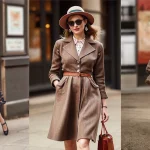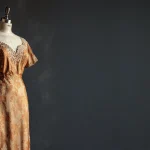The Influence of UK Fashion on Everyday Clothing Choices
UK fashion influence profoundly shapes daily fashion choices for women across the country. The dynamic blend of classic and contemporary British style often dictates what appears in wardrobes from London to Manchester. Women’s UK style is characterized by an effortless mix of practical pieces and trend-driven items, reflecting both high street brands and iconic designer influences.
British fashion icons like Victoria Beckham, Kate Moss, and emerging street style stars inspire many women to adopt looks that balance elegance with a touch of rebellion. This duality is visible in daily fashion choices, where tailored trench coats meet casual sneakers, or floral dresses are paired with chunky boots, showcasing a typical British eccentricity.
Also to read : How Can UK Fashion Choices Influence Women’s Daily Routines?
In different UK regions, the influence looks distinct. For instance, London’s street style often features edgy, avant-garde pieces, while northern cities lean towards cozy, layered outfits suitable for fluctuating weather. Women in coastal towns incorporate more relaxed, nautical-inspired elements into their daily fashion choices, demonstrating how regional culture and climate intertwine with UK fashion influence.
Overall, women’s UK style remains a vibrant reflection of broader British fashion trends, impacting what gets worn day to day and encouraging personal expression within practical limits.
In parallel : What Emerging Trends Are Influencing Women’s Fashion and Lifestyle in the UK?
UK Fashion and Professional Attire
Exploring workplace style dynamics in the UK
Workplace fashion UK has evolved significantly, reflecting broader cultural shifts and changing office environments. Traditionally, women’s business fashion emphasized formal suits and conservative styles. However, contemporary office wear trends now embrace a blend of professionalism and personal expression, offering more flexibility and individuality.
Women in the UK’s professional settings increasingly balance self-expression with the demands of workplace dress codes. This balance allows for modern silhouettes, a variety of fabrics, and subtle colors that maintain decorum while showcasing personality. For example, tailored blouses paired with sleek trousers or midi skirts have become staples, illustrating this blend.
Office wear trends in the UK also respond to sector-specific expectations, with creative fields often adopting more relaxed or avant-garde styles, whereas finance and law maintain classic standards. The key for many women lies in selecting pieces that command respect yet feel authentic.
Navigating these choices means understanding the nuances of professional attire without sacrificing comfort or style. Well-chosen accessories and quality fabrics contribute to making women’s business fashion both functional and fashionable, in line with UK workplace fashion.
Self-Expression and Identity Through UK Fashion
Discovering individuality in style
In the UK, self-expression clothing serves as a powerful tool for crafting personal identity. British fashion is renowned for embracing diversity, making it a fertile ground where individuals can highlight their unique style. From punk rock’s rebellious edge to the elegance of classic tailoring, the UK’s fashion landscape reflects a rich tapestry of identities.
The role of subcultures in shaping identity in fashion UK cannot be overstated. Each movement—be it goth, streetwear, or vintage revival—offers distinct visual languages. These subcultures invite women to challenge norms, encouraging experimentation without fear. For example, many women incorporate bold prints and unexpected layering to symbolize their creative freedom, turning everyday attire into an expressive statement.
Personal style influences in the UK draw from diverse sources: music, art, heritage, and even political views. This blend fosters a culture where fashion is more than fabric; it becomes a narrative of who someone is. Women using self-expression clothing tap into this richness, empowering themselves through style and making identity visible.
UK Fashion’s Effect on Women’s Body Image and Confidence
Exploring the intersection of style, representation, and self-esteem
The body image UK landscape is heavily shaped by British fashion’s influence, which sets evolving beauty standards impacting women’s self-perception. As UK fashion confidence rises, an increasing number of women feel empowered through styles that celebrate diverse body types, rather than conforming to a singular ideal. This change stems partly from the growing representation in UK fashion, where inclusivity is no longer just a buzzword but a tangible commitment by many brands.
Representation in UK fashion has broadened to include a spectrum of sizes, ethnicities, and ages, offering women a chance to see themselves reflected in media and runway campaigns. This visibility fosters a healthier relationship with self-image. Experts in body positivity affirm that such inclusivity encourages women to embrace their unique shapes, boosting confidence and reducing negative self-comparisons.
Ultimately, fashion confidence is more than clothing; it is a mindset influenced by how British fashion brands promote diversity and challenge outdated norms. This shift not only reshapes industry standards but also nurtures a more positive and authentic body image UK-wide.
Fashion and Social Interaction in the UK
Understanding how style shapes connection and identity
In the UK, social norms fashion plays a crucial role in how women express themselves and navigate social landscapes. Fashion is not merely about clothing but a language that communicates status, belonging, and individuality. Women often select outfits that reflect their personality while adhering to implicit social codes, balancing self-expression with social expectations.
At UK events and gatherings, dress codes signal what is appropriate, from formal receptions requiring elegant attire to casual meet-ups inviting trendy yet relaxed styles. These unwritten rules help maintain social harmony and signal respect. For example, a tailored blazer paired with classic accessories often conveys professionalism and confidence in networking settings.
Moreover, fashion acts as a bridge in building social circles and even online communities. Shared style interests foster connections, whether by following specific trends or supporting local designers. Online platforms amplify this interaction, enabling women to bond over fashion choices, exchange recommendations, and create inclusive spaces. This dynamic shows how fashion communication in the UK extends beyond appearance, becoming an essential tool for social engagement and relationship building.
Historical and Contemporary Trends Shaping UK Women’s Fashion
Exploring British fashion history reveals a fascinating evolution of women’s style that mirrors social change. From Victorian modesty to the rebellious spirit of the 1960s, fashion trends UK have continuously reflected the zeitgeist. The flapper dresses of the 1920s, for example, still influence modern cuts with their emphasis on freedom and movement.
The evolution of women’s fashion UK shows a shift from structured corsetry to more relaxed, gender-fluid designs. This progression highlights increased women’s autonomy and shifting cultural norms. Recent decades witnessed fashion trends UK embracing sustainability and ethical practices, reflecting wider social concerns.
Social, economic, and cultural changes profoundly impact current fashion. The rise of streetwear, driven by diverse urban cultures in London, demonstrates how economic accessibility and cultural blending create fresh trends. The digital age further accelerates shifts, allowing rapid dissemination of fashion ideas globally.
UK designers and celebrities remain influential. Designers like Alexander McQueen and Stella McCartney blend tradition with innovation, shaping modern British identity. Celebrities, from the Spice Girls to emerging stars, translate runway looks into everyday style, reinforcing the cyclical nature of fashion trends UK. Their impact sustains Britain’s reputation as a pivotal fashion hub.










